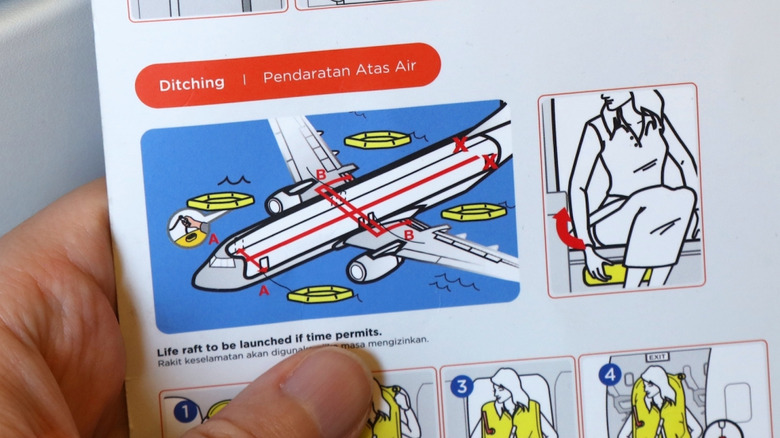Let’s be honest here, the in-flight safety briefing is mostly background noise for your pre-flight existential dread. You’re wrestling for armrest real estate while trying to decide if a 9 a.m. gin and tonic is socially acceptable. That part of the safety briefing you usually tune out to check your texts? The bit about a water landing? Turns out, there’s a good reason they mention it. You should listen.
In aviation lingo, this is called “ditching,” a controlled emergency landing on water. On one of the world’s most common aircraft, the Boeing 737, the safety card includes a terrifying little detail: you can’t use the back doors in a ditching. That’s right, in a “Miracle on the Hudson”-type scenario, two of your main exits are a total no-go.
Considering Boeing’s particularly awful 2024, you’d think the company would want every possible exit to, you know, work. While the Boeing aircraft has been certified, there are serious questions about why passengers lose access to critical exits in an emergency.
It’s all about the attitude
So why are the 737’s rear exits off the table? It’s because the plane is designed to float with all the grace of a Carolina-squatted pickup truck. This tail-down attitude results from a fundamental mismatch between its center of gravity and its center of buoyancy. An aircraft’s stability in water is a battle between these two invisible points. The center of buoyancy is the point where the upward force of the water pushes on the hull.
Wing design, such as placement and surface area, play a pivotal role in an aircraft’s buoyancy. On a 737, the wings are about 6½ feet further rearward, depending on the variant, than its Airbus A320 competitor. Six feet — crucial on Tinder, important in aviation. Every aspect and decision of an aircraft’s design can affect its airworthiness — but also the water-worthiness, should it be necessary.
You can see this same balancing act on dry land, too. The tail-heavy 737-900ER is notorious for “tail-sitting” at the gate, requiring a stand to prevent the center of gravity from shifting behind the main landing gear and tipping the plane backward. In the water, this tail-down attitude submerges the rear doors so that opening them against immense water pressure is nearly impossible and could lead to catastrophic flooding, sinking the aircraft much faster.
While Boeing has received the necessary certifications from regulatory and safety agencies to fly, it highlights troubling questions about prioritizing safety. When Volvo could have settled for standard lap belts, it instead invented the three-point safety belt — going above the minimum. Unusable exits in water landings reflect a different philosophy entirely — even if it passes legal muster.
An Airbus has a button for that
This situation is best understood when benchmarked against the 737’s primary rival, the Airbus A320. As a “clean sheet” design from the 1980s, as compared to the 737’s multiple iterations stemming back to the 1960’s, the A320 has a different approach to emergencies, one steeped in automation. It features a guarded “Ditching Switch” on the overhead panel in the cockpit. Pressing it automatically seals various valves and openings — including the main outflow valve and avionics inlets, to make the fuselage as watertight as possible and slow water ingress. The 737 has no such solution; the crew must work through a manual checklist.
However, reality has a way of humbling even the most clever engineering. During the famed 2009 “Miracle on the Hudson” — involving US Airways Flight 1549, an A320 — it is believed the Ditching Switch was not used. Even with its different design, photos from the Hudson show the A320’s rear section was also submerged, rendering its rear doors just as useless.
The ultimate lesson is that ditching is a violent, unpredictable event where pilot skill, crew preparedness, and basic airworthiness trump all. It’s certainly something to think about next time you wonder, if it’s Boeing, are you goeing?



